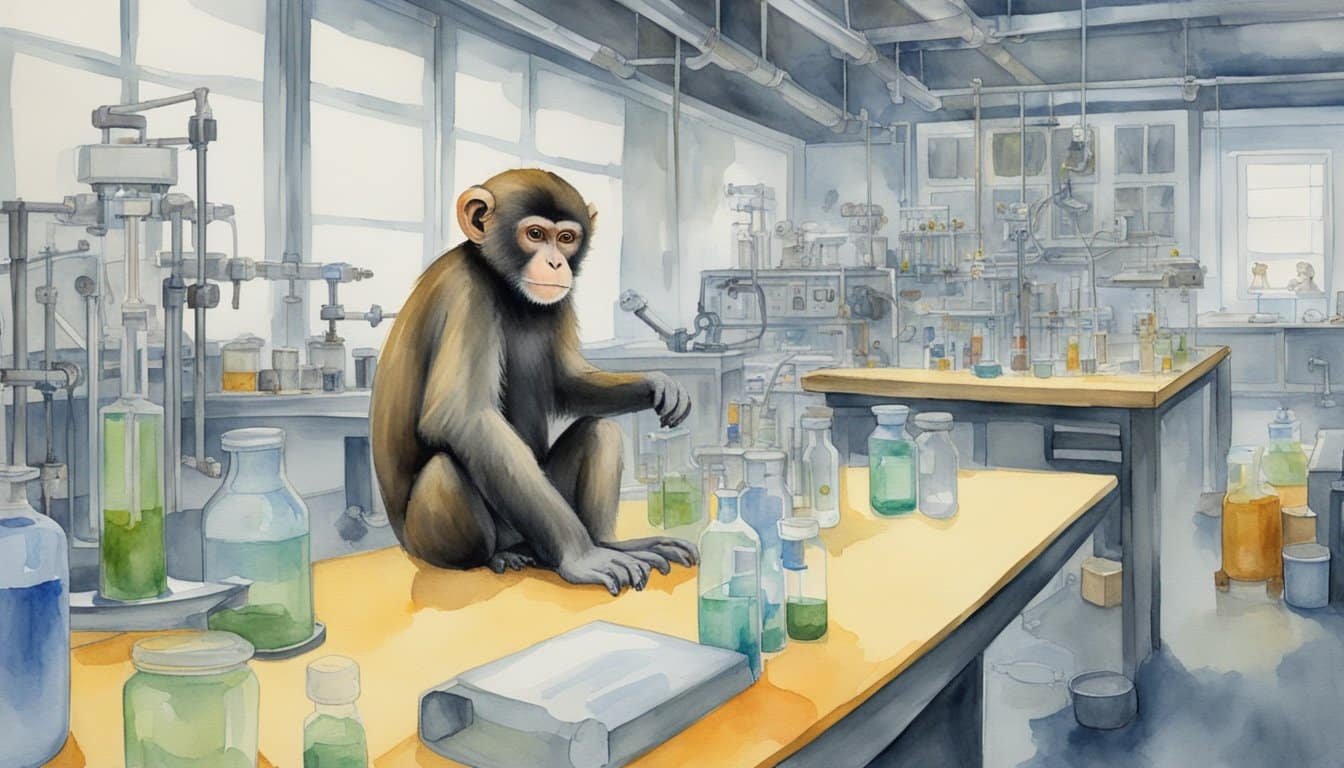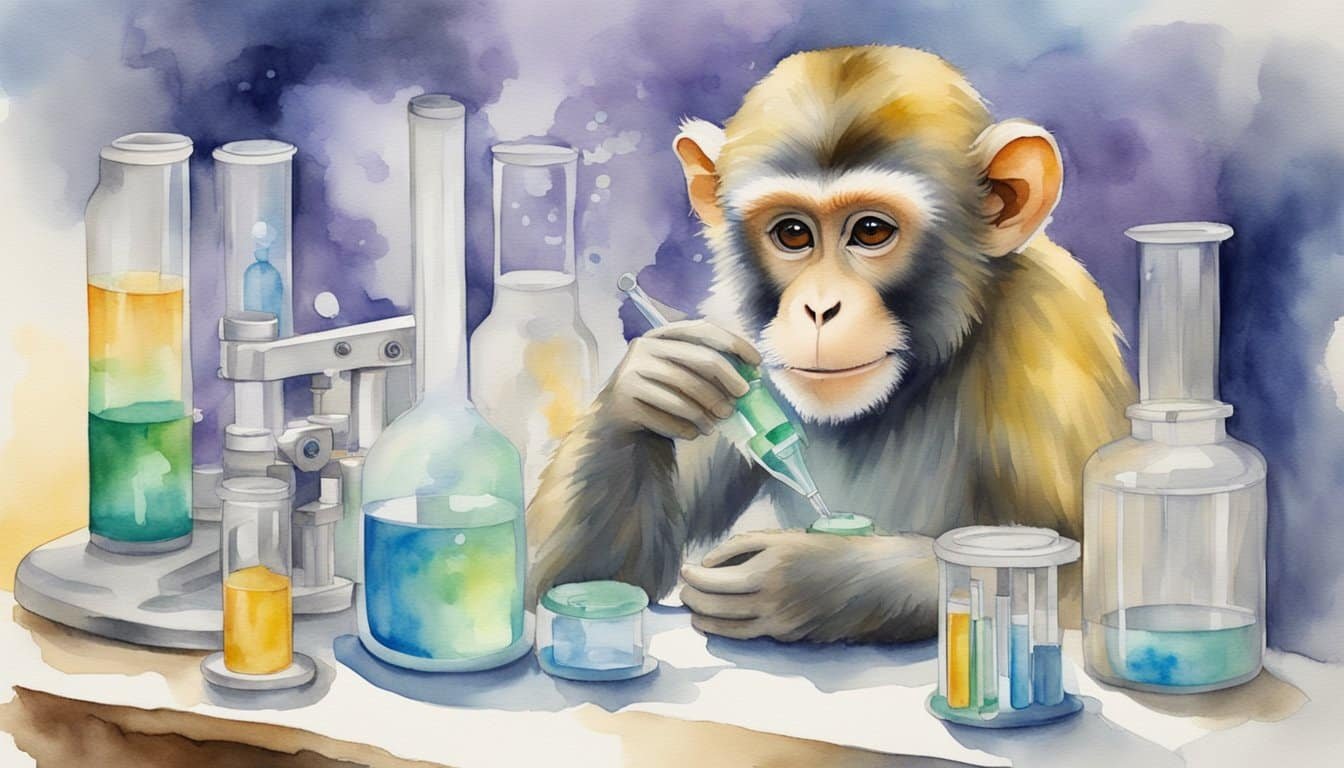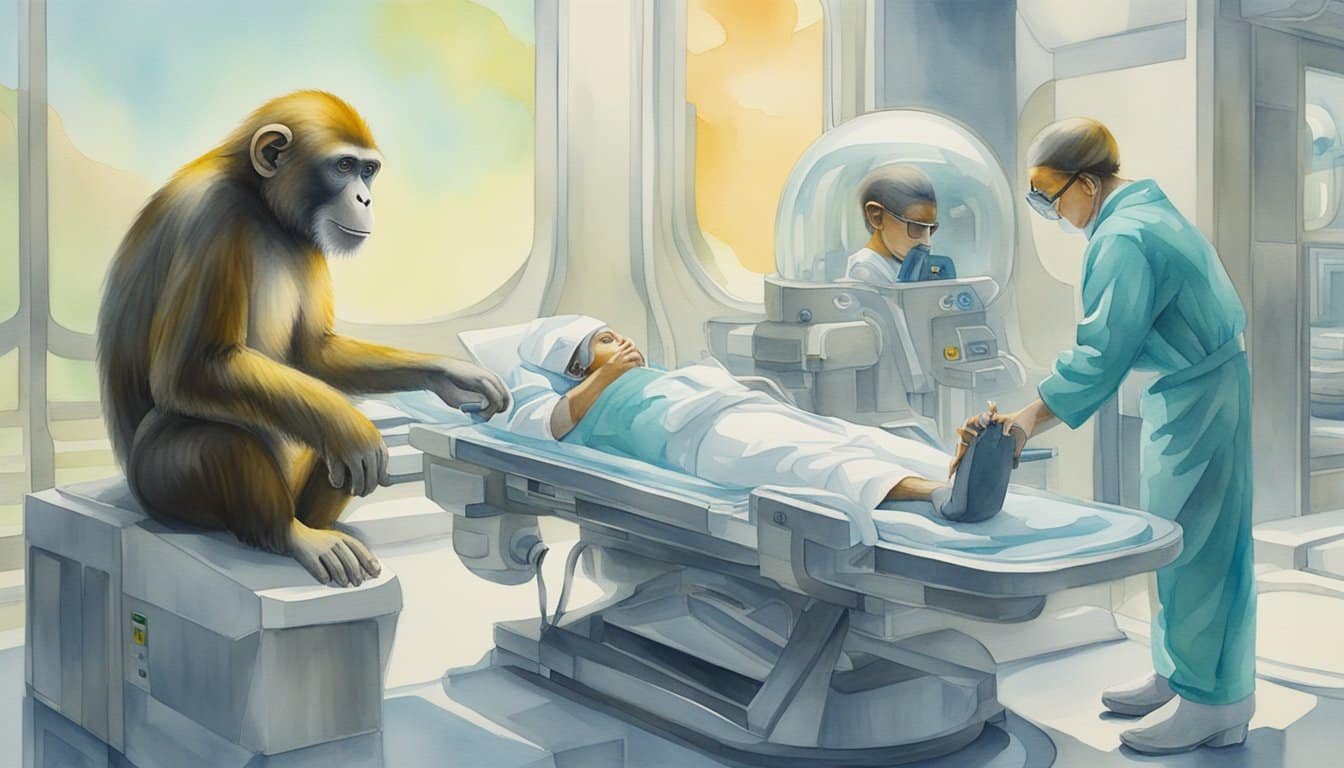Foundations of Human-Monkey Chimeras

Diving into the realm of human-monkey chimeras unearths a fascinating blend of cutting-edge science and ethical discussions. This field is not just about mingling species; it’s about unlocking the potential to study diseases and develop treatments that could save countless lives.
Chimera Definition and History
The term chimera harks back to Greek mythology, describing a creature with body parts from different animals. Fast forward to modern science, a chimera refers to an organism composed of cells from two or more species. Historical accounts suggest that chimeric research began with interspecies embryo amalgamation in the early 20th century, but the arrival of advanced molecular tools has truly enabled the creation of chimeras at a cellular level.
Roles of Stem Cells in Chimera Research
At the heart of chimera research lies the pivotal role of stem cells. These unspecialized cells have the remarkable ability to develop into various cell types, making them integral in chimera creation. By injecting human stem cells into monkey embryos, scientists can cultivate chimeric organisms that can offer invaluable insights into developmental processes and disease progression.
Significance of Juan Carlos Izpisua Belmonte’s Work
The pioneering work of Juan Carlos Izpisua Belmonte from the Salk Institute for Biological Studies stands out in the field. Belmonte’s team has pushed the boundaries of chimera research, integrating human cells into animal hosts, aiming to address organ shortages and understand human diseases better. Their work not only advances the scientific community’s grasp of gene expression and stem cell dynamics but also constantly redefines the ethical horizons of biomedicine.
Ethical Dimensions in Chimera Research

Creating human-monkey chimeras is an advancing field that aims to model human diseases but gives rise to complex ethical dilemmas and discussions about moral status and animal welfare.
Evaluating Ethical Concerns and Public Acceptance
Ethical concerns surrounding human-monkey chimeras pivot on questions of moral status—what rights the chimeric entities possess—and the potential for these creatures to exhibit human-like cognition. Bioethicists from institutions like Stanford University grapple with these ethical questions, especially as they relate to speciesism, a term coined to argue against assigning different values to beings solely on their species classification. There lie uncertainties in communication and whether a chimera could express human traits, further complicating its moral status.
The public acceptance of these entities varies greatly. While some argue for the advancement of science and the potential to model complex diseases like Alzheimer’s, others are concerned about the animal welfare implications and the breach of natural species boundaries. Universities engaged in such research, such as the Kunming University of Science and Technology and Peking University’s State Key Laboratory of Primate Biomedical Research, also need to consider how their work is perceived both domestically in China and internationally.
Regulations and International Perspective
The ethical landscape of chimera research is not uniform globally; regulations differ vastly. The United States, for example, has seen ethical challenges debated within institutions like the University of Texas Southwestern Medical Center, leading to stringent guidelines on chimera research. Conversely, China’s engagement in this area, particularly in regions with advanced facilities for biological research, faces distinct ethical considerations due to differing cultural and regulatory standards. As research progresses, calls for an international framework to address these questions and harmonize standards are on the rise, pointing towards a future where chimeras could be more widely accepted and regulated with a global perspective in mind.
Medical Applications and Future Directions

Exploring the vanguard of medical science reveals that the integration of human and monkey biology is forging new paths in organ transplantation and regenerative medicine. The research into human-monkey chimeras holds promise for revolutionary applications.
Organ Transplantation and Human Disease Models
The pursuit of solving the dire shortage of organs for transplantation has led scientists to innovative solutions, including the use of primate research. Human-monkey chimeras present a potential avenue for growing human organs within host animals. Ethical debate aside, this research could address the transplant demand and aid in understanding human diseases at a fundamental level. For instance, the use of macaques in elucidating the development and potential treatment of brain diseases shines a light on complex issues of cognition and early human development. Macaques, whose embryonic development closely mirrors that of humans, provide a solid base for modelling diseases and testing therapeutic interventions.
Potential for Regenerative Medicine
Regenerative medicine’s forefront sees human-monkey chimeras ushering in an era where failing tissues could be replaced or repaired with lab-grown options. Researchers are delving into ways to coax stem cells from these chimeras to regenerate human tissues and organs, thereby lifting the constraints of organ transplant availability. Furthermore, the understanding of embryo development and crosstalk between human and animal cells may unlock the secrets of early development and aging. Studies on brain cells derived from these chimeras hold the key to therapies that could potentially restore mental capacities, consciousness, and cognitive function in people suffering from degradation of the developing brain.
Discoveries in this field are not just about healing the body but also about enhancing our grasp on the mysteries of human existence and the intricate dance between our biological and moral capacities. While the journey is fraught with ethical and technical challenges, the potential to redefine life and health through hybrid futures calls for a thorough exploration of both the scientific possibilities and their repercussions on society.

